Download graphic version of this guide
Download .docx version of this guide
Download pdf version of this guide
Crossfall:

- Also called cross gradient, transverse gradient, camber, etc.
- For utility, we recommend “crossfall” is used to describe the steepest lateral gradient on a path or surface section.
Camber:

- “Camber refers to the whole road/path cross-section profile, including shape and angle.
- Also used to describe angle from vertical that wheels are mounted.
Why does crossfall matter?
Can cause mobility aids to tip & people to fall, especially when turning:
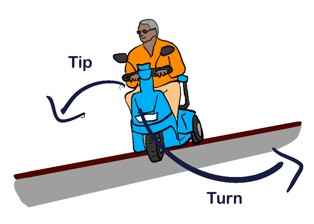
Can cause mobility aids, pushchairs & scooters to roll into carriageways:
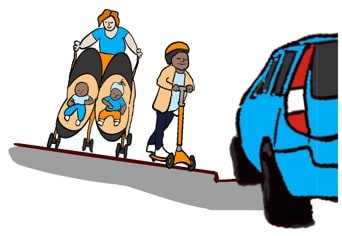
Increases effort to move, risks muscle & joint injury:
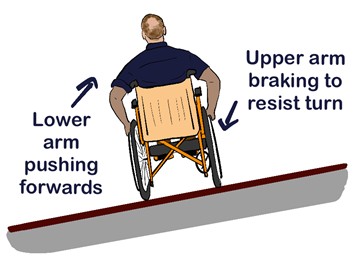
Common problem locations for unsafe &/or inaccessible crossfall:
Driveways/vehicle crossovers & dropped kerb crossings:
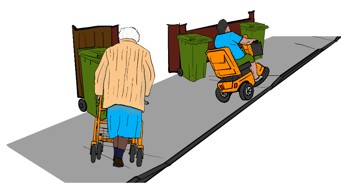
Solution: Ensure designs retain 1.5m width safe, level footway at all times.
On-carriageway cycle lanes:
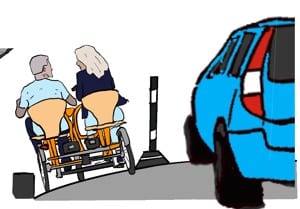
Solution: Check crossfalls during surveys, alter gradients and drainage as required.
Chicanes & access restrictions:
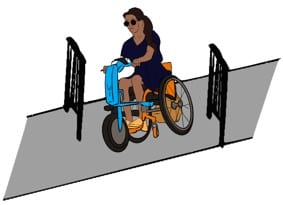
Solution: Remove access restrictions, use 1.5m min spaced bollards if required.
1:100 – 1:50 (1-2%) max crossfall is essential for public realm walking/wheeling & cycling accessibility.
References
Building Regulations Approved Document M
A graphic version of this quick guide is available here
For further details on accessibility and gradients, see our gradients quick guide.
